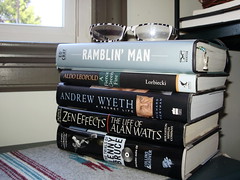It felt like it took a long time, but I finally finished The Hemingses of Monticello: An American Family by Annette Gordon-Reed. I am a fan of Thomas Jefferson, a brilliant, complex man whose paradoxes demonstrate his humanity. This book spends a lot of time examining those paradoxes.
Because Gordon-Reed refers to the Hemings, Wayles, and Jefferson using their familial relationships (ie, Sally Hemings was Martha Wayles Jefferson’s half sister since both were offspring of John Wayles, Jefferson’s father-in-law) the reader is struck throughout by the fact that these people are all related! And yet the white members seemed to feel no compunction about selling off their relatives. There was this huge black hole in the Southern vision that allowed them to move through their lives without really seeing those relationships.
The book was almost overwhelmingly detailed considering that so much of what she was writing about was speculation. We don’t know why James Hemings committed suicide but Gordon-Reed was able to give an overview of why other enslaved and free blacks did so, at least giving us some insight into what might have motivated James.
One point she makes throughout is that the owners write the history. As she considers the affect of Hemings’s story on Jefferson’s white family, she describes how they, “for the benefit of the historians who they knew would one day come calling, fashioned an image of life at Monticello designed in part to obscure her relevance” (Location 257).
She also tries to help the reader see things from Sally’s point of view despite having nothing in her own words. For instance, she spends a fair amount of time discussing why neither James nor Sally Hemings chose to stay in France even though all they had to do was petition the French court. Her paragraph on understanding love is one of the best in the book:
Love has been many things throughout history: the simple comfort of the familiar, having a person to know and being known by that person in return; a connection born of shared experiences, an irrational joy in another’s presence; a particular calming influence that one member of the couple may exert on the other, or that they both provide to one another. A combination of all these and myriad other things can go into making one person wish to stay tied to another. Anyone who is not in the couple–that is, everyone else in the world–will not understand precisely how or why it works for two people (Location 6612).
In other words…we simply can’t know or judge what happened except by recognizing that we are doing so without complete understanding. Later, as she questions aloud for the reader why neither James nor Sally contacted abolitionists when they were in Philadelphia, she cautions again about making judgments based on our own experiences. She writes, “One should resist the temptation to say that when a person does not make the choice one would have made, that person must have been forced or tricked into it or deny that he had any choice at all” (Location 8983).
I found the story of Sally’s sister Mary particularly illustrative of the paradoxical nature of these relationships in the 18th century. Mary had been leased to Thomas Bell, a business owner in Charlottesville. The two developed a relationship that included children. Eventually, Bell bought Mary and they lived together in the town. He never freed her in his lifetime and Gordon-Reed suggests this is because he could use slavery as a cover for their activities. The law would have prohibited them marrying if he did free her. But as we’ve seen, Southerners turned a blind eye to relationships between white male owners and black female slaves. Gordon-Reed writes, “Slavery provided a ‘polite’ cover for what would otherwise be illegal fornication” (Location 7425). She quotes RTW Duke, who lived in Charlottesville at the same time as Hemings’s and Bell’s grandchildren. He describes the morality of the time as “easy” in relationship to what people did and how people reacted to their actions. Duke said, “No on paid attention to a man’s method of living” (Location 7382).
I was surprised by this revelation, as Gordon-Reed thought we would. She writes:
Eighteenth-century people like Bell, Hemings, Jefferson, and their neighbors fit the popular conception neither of the Puritans nor of the later Victorians, though there is often a tendency to read the perceived values of one society forward and the other backward to cover the people who lived in the interim. There were standards of behavior, as there are in every period, but the era of Bell, Jefferson, and Hemings was practical–more libertarian–about the ways of human beings and sex” (Location 7387).
Once again, the historian reminds us that we can’t judge history by our own time.
But Gordon-Reed did use history to comment, often somewhat wryly, on our own time. One of my favorites related to “pro-family legislators.” Jefferson’s obsession with developing the United States had a negative impact on both the black and white members of his family:
Much as he spoke of his family as the center of his universe, he, like many public men before and after him, arranged his life so that he spent large amounts of time away from his family doing what he thought was the real business of his life (Location 11664).
The book was well worth reading, if a bit dense at points. Gordon-Reed has done her due diligence. Yet, she still manages to tell a compelling story.

